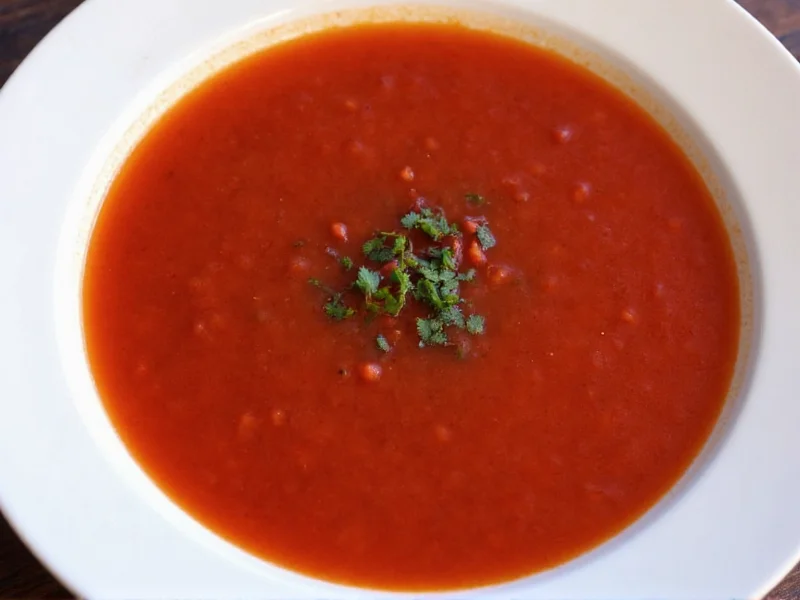Borscht represents one of Eastern Europe's most iconic culinary creations, with roots stretching back centuries. This distinctive soup has evolved through generations, adapting to regional preferences while maintaining its essential character. The deep crimson color that defines authentic borscht comes primarily from beets, though some variations achieve their hue through fermentation processes.
Historical Origins and Cultural Significance
The history of borscht soup traces back to medieval times in what is now Ukraine. Originally made from common fermented foods like cow parsnip, the recipe transformed when beets became widely available in the 16th century. Ukrainian peasants developed the version most recognized today, using readily available root vegetables and seasonal ingredients.
Borscht holds profound cultural importance across Eastern Europe, particularly in Ukraine where it's considered a national dish. During Soviet times, borscht became associated with Russian cuisine internationally, though its origins are distinctly Ukrainian. The soup traditionally appears at major celebrations including weddings, holidays, and family gatherings, symbolizing prosperity and hospitality.
Defining Characteristics of Authentic Borscht
What makes borscht soup unique among global culinary traditions? Several elements distinguish authentic borscht from imitations:
- Beet Dominance - Beets provide both color and earthy sweetness
- Sour Flavor Profile - Achieved through vinegar, lemon juice, or fermented beet kvass
- Vegetable Medley - Typically includes cabbage, potatoes, carrots, and onions
- Broth Base - Usually meat-based (beef or pork) though vegetarian versions exist
- Traditional Garnish - Sour cream and fresh dill complete the presentation
| Ingredient | Traditional Role | Substitution Possibility |
|---|---|---|
| Beets | Primary color and flavor base | Essential - no authentic substitute |
| Vinegar or Lemon Juice | Creates signature sour profile | Kvass (fermented beet broth) alternative |
| Meat Broth | Provides depth and richness | Vegetable broth for vegetarian version |
| Sour Cream | Traditional garnish that balances acidity | Plain yogurt or dairy-free alternatives |
Regional Variations Across Eastern Europe
While Ukrainian borscht remains the most recognized version, neighboring countries have developed distinctive interpretations of this traditional beet soup:
Ukrainian Borscht - Considered the original version, typically includes meat broth, beets, cabbage, potatoes, and carrots. Served hot with generous sour cream. Some regions add beans or mushrooms.
Russian Borscht - Often includes tomato products for additional acidity and color. May feature more root vegetables and sometimes includes meat chunks rather than just broth.
Polish Barszcz - Typically clear broth without vegetables, served as a starter. Often includes uszka (small mushroom dumplings) during Christmas Eve celebrations.
Belarusian Borscht - Frequently includes more garlic and may incorporate different types of cabbage. Some versions use beet kvass as the primary base rather than cooked beets.
Cold Borscht (Chłodnik) - Popular in Poland and Lithuania, this refreshing summer version blends beets with buttermilk or kefir, creating a pink-colored chilled soup often served with hard-boiled eggs.
Traditional Preparation Methods
Authentic borscht preparation follows specific techniques that contribute to its distinctive flavor. The traditional method involves:
- Preparing a rich meat broth (optional for vegetarian versions)
- Separately cooking beets with vinegar to preserve their vibrant color
- Sautéing onions, carrots, and other vegetables
- Combining all elements and simmering to develop flavors
- Adding cabbage and potatoes at appropriate stages
- Allowing the soup to rest overnight for flavors to meld
Many traditional cooks emphasize that proper borscht requires at least two days to prepare - one for making the broth and another for combining all ingredients and allowing flavors to develop. The soup actually improves in flavor after sitting for 24 hours, making it ideal for preparing in advance.
Modern Interpretations and Global Popularity
Today, borscht has gained international recognition beyond its Eastern European origins. Chefs worldwide have created innovative interpretations while respecting traditional elements. Modern variations include:
- Quick-prep versions for contemporary lifestyles
- Vegan adaptations using mushroom broth
- Deconstructed borscht presentations in fine dining
- Regional adaptations incorporating local ingredients
Despite these innovations, the core elements remain consistent - the distinctive red color from beets, the balance of sweet and sour flavors, and the comforting warmth of a well-prepared soup. Food historians note that borscht's global spread accelerated during Jewish diaspora, as Ashkenazi communities carried their versions of the soup to new countries.
How to Experience Authentic Borscht
For those seeking an authentic borscht experience, certain elements elevate the dish beyond ordinary soup:
- Proper beet preparation - Cooking beets with acid preserves their color
- Balanced sourness - Neither overwhelming nor absent
- Rich broth foundation - Whether meat-based or vegetarian
- Fresh herb garnish - Particularly dill and parsley
- Serving temperature - Hot versions should be piping hot, cold versions properly chilled
When properly prepared, traditional Ukrainian beet soup offers a complex flavor profile that balances earthiness from the beets, sweetness from carrots, tanginess from the acid component, and richness from the broth. The texture should be hearty but not overly thick, with vegetables cooked to just tender.
Common Misconceptions About Borscht
Several misconceptions surround this traditional Eastern European soup:
- It's exclusively Russian - While popular in Russia, its origins are Ukrainian
- All borscht is red - White borscht exists in Polish tradition
- It's always served hot - Cold versions are traditional in summer
- It's difficult to make - Basic versions are straightforward, though authentic preparation takes time
- It's just beet soup - The combination of ingredients and preparation methods create a distinctive dish











 浙公网安备
33010002000092号
浙公网安备
33010002000092号 浙B2-20120091-4
浙B2-20120091-4